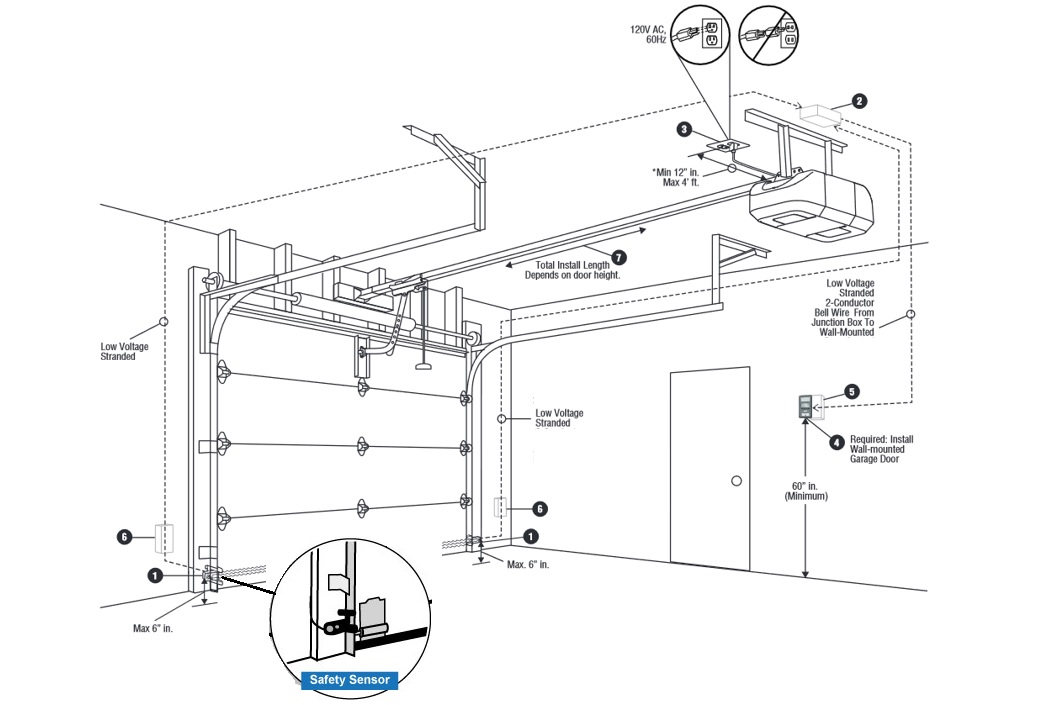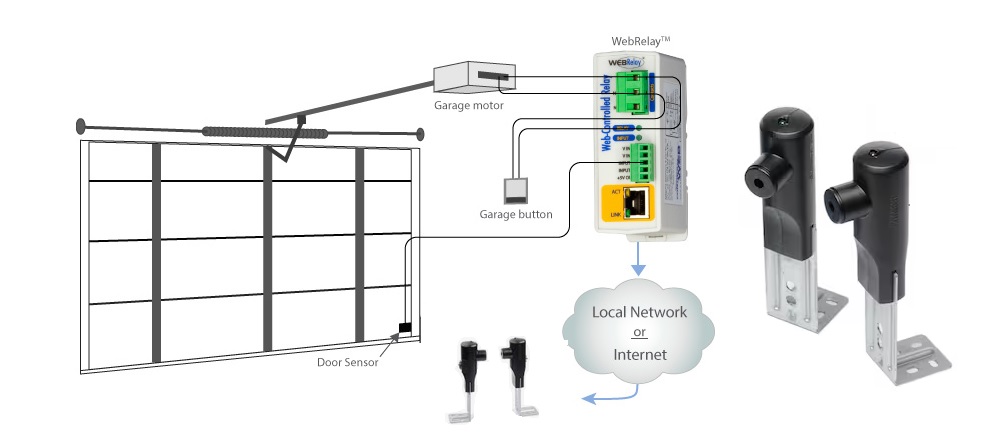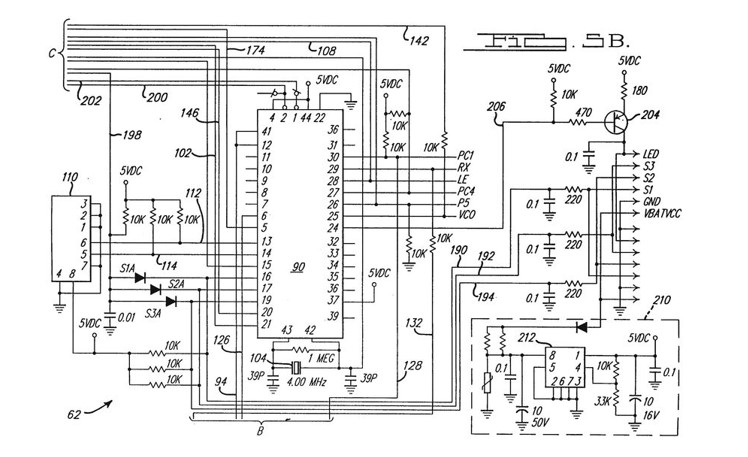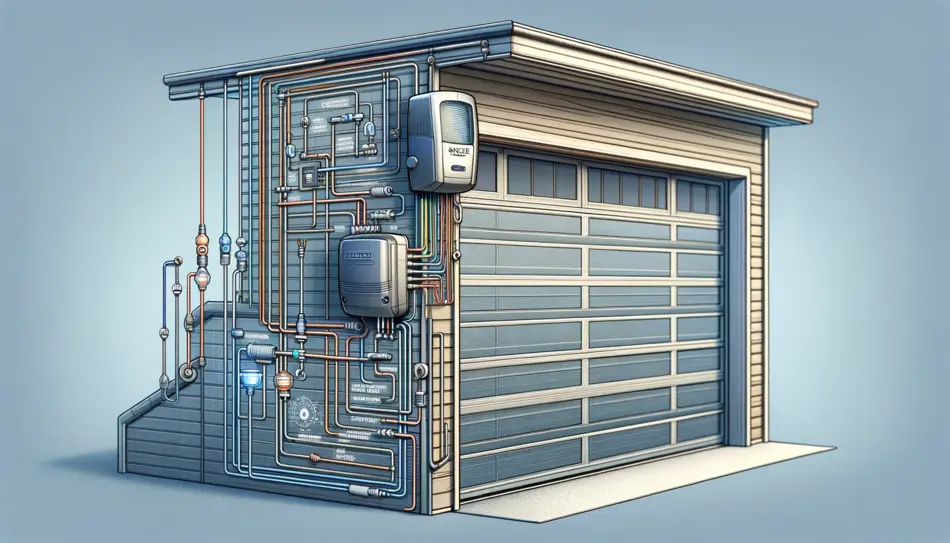

As part of constructing a new home garage, many homeowners want to know how to connect their sensors to a garage so they work properly. Understanding the wiring diagram of these sensors not only streamlines the installation process but also equips you with the knowledge to troubleshoot potential issues in the future.
This is very helpful, as it ensures the longevity and reliability of your garage door opener, keeping it functioning smoothly for years to come. In this article, we’ll discuss garage door opener sensor wiring diagram and much more. So, let’s start!
Table of Contents

The garage door opener sensor wiring diagram is a critical blueprint that outlines how the sensors, which are safety features of your garage door, are connected to the opener system. This diagram provides clear guidance on the electrical connections necessary to ensure that your garage door reverses automatically if it encounters an obstacle.
Familiarizing yourself with this diagram ensures your garage door opener’s safe and effective functioning. Now that we understand the wiring diagram let’s explore how to connect it to your garage doors.

When it comes to installing safety sensors for your garage door opener, these sensors are crucial for ensuring that your garage door stops and reverses if it encounters an obstacle. The process begins with understanding how to connect these sensors to the terminal types on your opener. Here are a few examples of how you can do this:
This process will explain how to connect these sensors to the terminal types on your opener. Here is what you need to do to connect plug-in terminals:
1. Preparing the Wires:
2. Connecting the Wires:
3. Attaching to the Motor Unit:
This section’ll explain how to connect these sensors using pre-existing wires, making the process straightforward and manageable.
1. Preparation of Wires:
2. Wire Splicing and Connections:
Following these steps, you can ensure a secure and correct connection of your garage door opener’s safety sensors.
NOTE! To release or insert wires into the quick connect terminals, push in the tab below the terminal with the tip of a screwdriver.
When you’re installing sensors for garage door openers with screw terminals, it’s important to correctly connect the wires for optimal functionality and safety. Here’s a step-by-step guide:
1. Preparing the Sensor Wires:
2. Joining the Wires:
3. Connecting to the Motor Unit:
Following these steps ensures that your garage door sensors are wired correctly, which is essential for the safe and efficient operation of your garage door opener. Remember, proper wiring is crucial for the longevity and reliability of your garage door system.
When you’re working with pre-existing wires for your garage door sensors and screw terminals, the process requires precision and attention to detail. Here’s a step-by-step guide to ensure a safe and effective installation:
1. Preparing the Wires:
2. Splicing and Connecting Wires:

To wire garage door sensors, twist the two white wires with black stripes together and then twist the two solid white wires together. Connect the twisted white-with-black-stripe wires to the gray terminal and the twisted solid white wires to the white terminal on the motor unit.
Garage door sensor wires typically handle low voltage, around 12 volts, and are usually made of thin copper wire. This is because manufacturers often provide specific wiring for these sensors without a set standard for the type of wire used.
In conclusion, understanding the garage door opener sensor wiring diagram is crucial for ensuring the safety and efficiency of your garage door system. Proper installation and wiring prevent potential accidents and contribute to the garage door’s smooth operation. It’s important to follow the guidelines meticulously, regardless of whether you’re a professional installer or a DIY enthusiast.
Remember, a well-wired garage door sensor is a key component in the overall functionality of your garage door opener, providing peace of mind and security for your home. With the right approach and attention to detail, you can achieve a successful and safe installation.
Mario Poljak is the owner and founder of Home Hacks DIY. Home improvement was his passion since an early age. With his experiences and knowledge in this area, he has decided to share everything he has learned in the last 10 years.